By and large, ecommerce is the most convenient, easiest way to shop. The inventory, price comparisons, and home delivery are clearly superior to shopping in brick-and-mortar stores. But despite their perks, there’s still one way that ecommerce businesses want to make their shopping experience more like shopping at a brick-and-mortar store: understanding what a product is like in a tangible, sensory way.

Consumers want to be able to imagine their purchases in their lives before they pull the trigger. But exactly how they want to visualize things depends on what you’re selling. What works for selling luxury shoes won’t be what works for selling makeup or cookware.
To better understand how you can cater to your customers with add-ons to your ecommerce site, we recommend you determine the following:
- What a customer wants to know before making a purchase
- Why an in-person experience helps a customer choose your product
- How to best demonstrate the value of your product
We’ll show you how to apply this formula by looking at different methods of approximating the brick-and-mortar experience online.
Personalization: Digital try-on
If you’re selling a product that is highly personalized, it can be hard to get first-time buyers to commit to purchasing from a website. Whether it’s glasses or a foundation, customers don’t want the hassle of buying multiples, trying them after waiting 5–7 days for shipping, and then going through the hassle of returning whatever doesn’t work. At that rate, it’s easier to pop into a store.
That’s because what a customer wants to know with products like glasses is, how will this item that can’t be modified fit my [face, skin tone, etc.]? A pair of pants can be hemmed, but glasses are gonna look how they’re gonna look. Why does an in-person experience help? It lets customers immediately determine whether your product is right for them.
So how do you show the value of your product in a digital setting? A digital try-on is a good start. Take this eyeglasses finder from Eyeconic. It uses your webcam to asses your face shape and size and then lets you choose from suggested frames:
This is a sophisticated try-on system that lets you see glasses on your face from multiple angles, as if you’re looking in a mirror. It’s hard to tell that the model isn’t really wearing glasses in the photo on the bottom. These visuals give critical insight into how a product will appear in person.
If customers can “try on” dozens of glasses from home, just as they can in the store, the gap between ecommerce and a brick-and-mortar store lessens. Whatever their quirks—skin tone for foundation or nose shape for glasses or forehead dimension for haircuts—customers can find a product that works, right from the comfort of their homes.
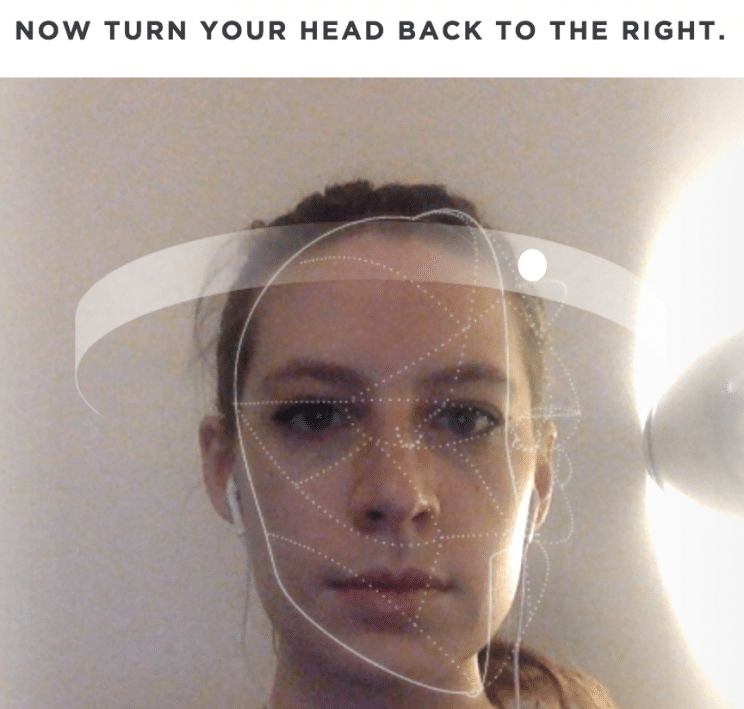
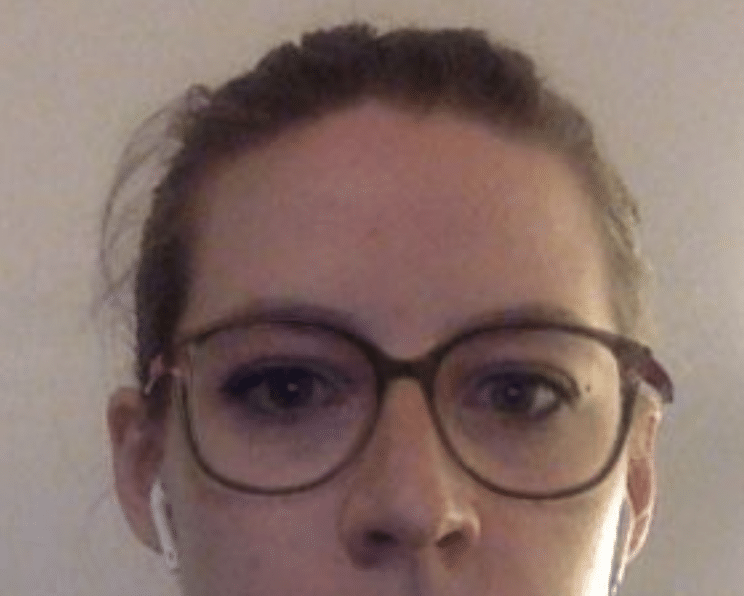
Items that are expensive and require hoopla to get into and out of someone’s space (think mattress, sofa, fridge, art) aren’t typically purchased online. Although shoppers may browse around to identify initial interests, many customers prefer to see these items in person.
What customers want to know about an item are its proportion and its true aesthetics (like accurate colors) so they can see how it would fit in their space. If they don’t know these things, they risk expensive delivery (and removal) services to get a big or pricey item in and out of their homes. Why an in-person experience makes sense for this type of product comes down to risk management—including color matching and breaking out the measuring tape to be sure things will fit.
Before now, this was simply impossible for ecommerce to replicate. Loveseats and desks were always going to be the purview of brick-and-mortar stores. But now, how you can show customers your product is racing into the future. Virtual designs that allow customers to “place” items in their homes give more of an in-store feel to shopping for large items than ever before.
Take this app, which allows customers to select an item and then place it in one of their rooms. A customer actually gets a better idea of how that item would look in their space than if they were in-store.
This technology is still developing, but it has the potential to reshape the way we purchase large, expensive items. Perhaps people will still go to a showroom to sit in a chair, but they might wait until they can get home and “see” it in their space before they purchase, flipping the script on what happens now.
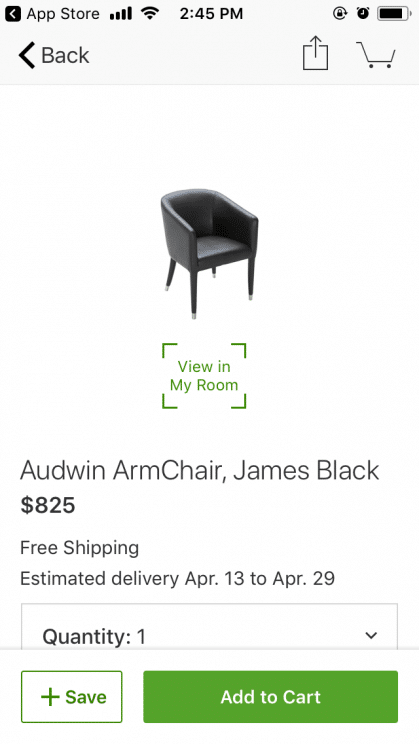
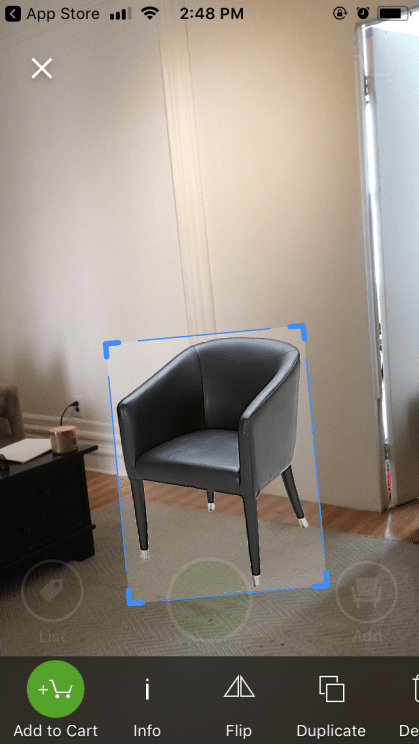
Will it work for me: Product videos & customer galleries
When was the last time you saw clothing you thought you liked online, ordered it, tried it on, and then realized it looked terrible on you? For clothing, bags, accessories, and even cosmetic products, customers want to know what a product looks like on them, and how it feels.
In this case, why customers want to interact with an item is because they want the information usually obtained by trying things on, testing a sample, and handling items in-store. (Fit, for example.) For a long time, the only way that ecommerce retailers tried to give people that experience was through product pictures. But can you really tell what pants are going to look like on you if you don’t look exactly like the model?
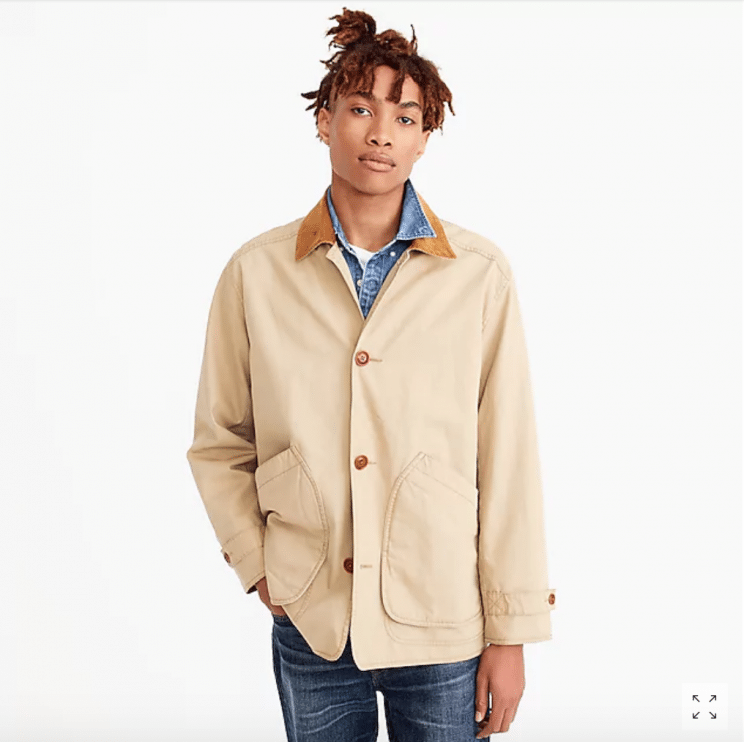
If you’re not a tall, thin man, good luck figuring out how this “unisex” jacket will fit you.
Clothing retailers and cosmetics retailers that want consumers to see products on different skin tones commonly employ two ways to show how their product relates to a customer: product videos and customer galleries.
Take this video of a pair of shoes—something notoriously hard to represent with just a few photos. It’s as though someone’s standing in front of a mirror and giving themselves the chance to decide whether they like the look of the item.

Or take this video of a shirtdress—notice how the bottom of the dress gapes as the model walks into the frame? That’s something that wouldn’t be evident in a product description, but it might be a key factor for a taller customer considering a purchase.

Another way ecommerce retailers give customers additional information about products and how they will look when worn is by posting a gallery of customer photos on product pages. Take this product gallery of customers wearing shades from a Natasha Denona blush palette:

At $89.00 plus tax for 1.5 ounces of product, this is a luxury item that customers want to be absolutely sure they’re going to like before they purchase. This gallery, where Sephora shoppers can upload their own photos, shows that this palette works well on light and medium skin tones. For clothing, a customer gallery can give a sense of how an item works on different body types and heights.
Product videos for items such as purses or luxury skincare can also give customers a sense of how an item handles. We all pick up and play around with items in-store; doing so helps us make purchasing decisions. We also try samples and different sizes when we’re in-store. Presenting this visual array of information in ecommerce is a key way to connect with your consumers if you’re selling highly personal items, like clothes or makeup.
The key is visual information
All of these ecommerce additions help your customers by giving them more visual information about an object. One of the biggest advantages of brick-and-mortar stores is all the information a customer gets by picking up an item up, trying it on, looking at it, judging its scale, etc.
Which means that when customers go online, they’re confronted with the fact that an actual product isn’t in front of them. It’s hard to get excited about something when you’re not sure whether it’s going to be right for you or your space, and you’re dealing with shipping (and maybe returning).
That’s why these solutions—as simple as a product video and as complex as a complete VR or AR experience—work so well. People don’t want to read the measurements of a dress; they want to see whether it gapes when they’re walking. Lengthy product copy only goes so far when trying to excite customers and prove that your product is exactly what they’re looking for. Visuals are what really takes it home.